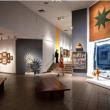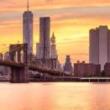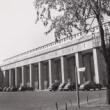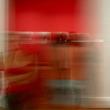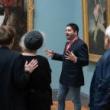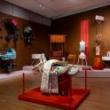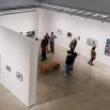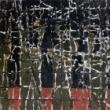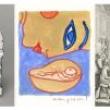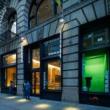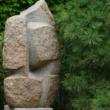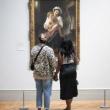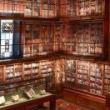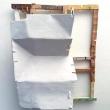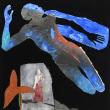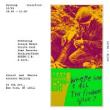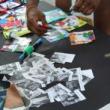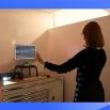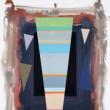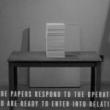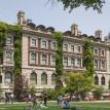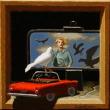free things to do in New York City
| < | December 2025 |
> | ||||
| Su | Mo | Tu | We | Th | Fr | Sa |
|---|---|---|---|---|---|---|
| 1 | 2 | 3 | 4 | 5 | 6 | |
| 7 | 8 | 9 | 10 | 11 | 12 | 13 |
| 14 | 15 | 16 | 17 | 18 | 19 | 20 |
| 21 | 22 | 23 | 24 | 25 | 26 | 27 |
| 28 | 29 | 30 | 31 | |||
Free Events, Free Things to Do in New York City! Read More
New York gives you numerous choices when you are in a mood to attend an art gallery exhibition or be a part of an exhibition opening. Some sources say that there are more than a thousand of art galleries in NYC and, of course, you do not have time to attend them all. But the good thing is that art galleries are usually located in clusters and so if you go to one of them, there is, basically, a 100% chance that you will be able to see art works, be that paintings or photos or scupltures, in many other art galleries located just nearby, whatever neightborhood you happen to be in.
The very first neighborhood where artist lived and art galleries thrived in New York City was Grenwich Village, which boated active art scene as far back as 1850. That active art scene did last: Greenwich Village was the place where Gertrude Vanderbilt Whitney opened her Whitney Studio Club Gallery in 1914, which would become the Whitney Museum for American Art (now located in Chelsea).
With immigrants pouring into the city in larger numbers than ever before at the turn of the century, the wealthy families tried to outrun their spread uptown by moving to the Upper East Side. The art galleries followed the buyers and established themselves in the neighboorhood as well.
Midtown, Grenwich Village and the Upper East Side housed most of the New York art galleries for over 100 years. Those three neighborhoods continue to house many of Manhattan art galleries. Upper East Side art galleries are located mostly in the area between Park and Fifth Aves in the mid-70s. Midtown art galleries are clustered near Fifth Avenue. Many of them are on the 57th St. They usually represent big name artists.
Early in the 1960s artists started moving into the neglected commercial lofts of the cast-iron district south of Houston Street, known as SoHo. In the 1970s and ’80s SoHo was the City’s best-known art distric. But SoHo art galleries became the victims of the neighborhood's success which they themselves have created. Before the artists moved into SoHo, the neightborhood was an array of empty factories buildings and abandoned warehouses. Artists moved in as the premises had lots of light and space, and were dirt cheap. As the artists were right there, the art galleries sprang up. The neighboorhood attarcted crowds and so retailers decided to capitalize on the cool images that SoHo have attained. They flooded the area and it made the rents go skyhigh and made the area unaffordable to the artist community. This story repeats itself in many towns and cities all over the world, and so instead of dwelling on it, let us tell you which other neighborhoods have the galleries that you may want to atend. SoHo has become more of a shopping mall than a place to see intereating art work, although about 20 galleries are still located there.
The first place that comes to mind when one talks about the artists' and galleries' flight from SoHo is, of course, Chelsea. That's where many of SoHo galleries had to run to when the skyrocketed rent forced them to leave SoHo in the 90s. Chelsea art galleries are located between 18th and 28th Streets going South/North and between 10th and 11th Avenues going East/West. If you start there you may end staying there, as Chelsea's list of galleries has about 200 names or so.
Another gallery district is the Lower East Side, which is located east of Bowery and between Houston and Grand Streets. The galleries here usually show up and coming artists. You can see there lots of local grown art. The neighborhood is filled with inviting bars, cafes and restaurants, and with small smart clothing shops. So you can combine gallery hoping with bar hoping and with shopping for something off the beaten track.
The very first neighborhood where artist lived and art galleries thrived in New York City was Grenwich Village, which boated active art scene as far back as 1850. That active art scene did last: Greenwich Village was the place where Gertrude Vanderbilt Whitney opened her Whitney Studio Club Gallery in 1914, which would become the Whitney Museum for American Art (now located in Chelsea).
With immigrants pouring into the city in larger numbers than ever before at the turn of the century, the wealthy families tried to outrun their spread uptown by moving to the Upper East Side. The art galleries followed the buyers and established themselves in the neighboorhood as well.
Midtown, Grenwich Village and the Upper East Side housed most of the New York art galleries for over 100 years. Those three neighborhoods continue to house many of Manhattan art galleries. Upper East Side art galleries are located mostly in the area between Park and Fifth Aves in the mid-70s. Midtown art galleries are clustered near Fifth Avenue. Many of them are on the 57th St. They usually represent big name artists.
Early in the 1960s artists started moving into the neglected commercial lofts of the cast-iron district south of Houston Street, known as SoHo. In the 1970s and ’80s SoHo was the City’s best-known art distric. But SoHo art galleries became the victims of the neighborhood's success which they themselves have created. Before the artists moved into SoHo, the neightborhood was an array of empty factories buildings and abandoned warehouses. Artists moved in as the premises had lots of light and space, and were dirt cheap. As the artists were right there, the art galleries sprang up. The neighboorhood attarcted crowds and so retailers decided to capitalize on the cool images that SoHo have attained. They flooded the area and it made the rents go skyhigh and made the area unaffordable to the artist community. This story repeats itself in many towns and cities all over the world, and so instead of dwelling on it, let us tell you which other neighborhoods have the galleries that you may want to atend. SoHo has become more of a shopping mall than a place to see intereating art work, although about 20 galleries are still located there.
The first place that comes to mind when one talks about the artists' and galleries' flight from SoHo is, of course, Chelsea. That's where many of SoHo galleries had to run to when the skyrocketed rent forced them to leave SoHo in the 90s. Chelsea art galleries are located between 18th and 28th Streets going South/North and between 10th and 11th Avenues going East/West. If you start there you may end staying there, as Chelsea's list of galleries has about 200 names or so.
Another gallery district is the Lower East Side, which is located east of Bowery and between Houston and Grand Streets. The galleries here usually show up and coming artists. You can see there lots of local grown art. The neighborhood is filled with inviting bars, cafes and restaurants, and with small smart clothing shops. So you can combine gallery hoping with bar hoping and with shopping for something off the beaten track.
Join the Club!
The quality and quantity of
free events,
free things to do
that happen in New York City
every day of the year
is truly amazing.
So don't miss the opportunities
that only New York provides:
stop wondering what to do;
start taking advantage of
free events to go to,
free things to do in NYC
today!
The quality and quantity of
free events,
free things to do
that happen in New York City
every day of the year
is truly amazing.
So don't miss the opportunities
that only New York provides:
stop wondering what to do;
start taking advantage of
free events to go to,
free things to do in NYC
today!
119 Art Events in New York City Mon, 12/01/2025 - and on...
There are over a thousand art galleries in New York, most of which are located in six Manhattan neighborhoods: Chelsea, SoHo, Midtown, Upper East Side, Greenwich Village, and East Village. It is almost impossible to list all the exhibition openings that take place in NYC art galleries. Here is a good sampling to start with.
Museums | Tuesday at a Unique Art Museum
Candid, genuine, and unexpected, this is New York City's only museum dedicated to folk & self-taught artists. The Museum celebrates the creativity of individuals whose singular talents have been refined largely through personal experience rather than formal artistic training. The museum's collection includes more than seven thousand works of art from four centuries and nearly every continent--from compelling portraits and dazzling quilts to powerful works by living artists in a variety of mediums. From critically acclaimed exhibitions and publications to inspiring educational programs and robust community outreach, the museum's mission is to be the leading forum shaping the understanding and appreciation of folk and self-taught art across time and place.
New York City, NY; NYC
Join the Club!
Tue, Dec 2
11:30 am
Free
11:30 am
Free
Museums | New York City: History, Architecture, Social Movements, Cultural Diversity
This museum holds over 1,5 million artifacts, including photographs, paintings, decorative arts, costumes, and documents that tell the story of New York's development and its inhabitants. Explore the galleries and discover the rich history and vibrant culture of New York City!
New York City, NY; NYC
Join the Club!
Wed, Dec 3
10:00 am
Free
10:00 am
Free
Museums | Tiffany Glass and Other Exhibitions
The museum is dedicated to showcasing the history, art, and culture of its area with a permanent collection of 10,000 items. One of the exhibitions includes famous Tiffany's leaded glass objects and a valuable insight into the development of the inuctry in the US at the turn of the 20th century.
New York City, NY; NYC
Join the Club!
Wed, Dec 3
12:00 pm
Pay-what-you-wish, reservation required
12:00 pm
Pay-what-you-wish, reservation required
Museums | Afternoon in a Magnificent Small Museum
Internationally recognized as a premier museum and research center, this museum is known for its distinguished Old Master paintings and outstanding examples of European sculpture and decorative arts.
New York City, NY; NYC
Join the Club!
Wed, Dec 3
1:30 pm
Pay-What-You-Wish, reservation required
1:30 pm
Pay-What-You-Wish, reservation required
Open Studios | Explore Current & In-Progress Artwork
NYU's BFA Studio Art program invites the public to visit the studios of seniors and juniors. This is an exciting opportunity to see current and in-progress artwork and to gain insight into their process of artmaking. The BFA Studio Art program at NYU Steinhardt supports a vibrant and diverse community of over 200 Studio Art majors working in a wide range of media and artistic sensibilities.
New York City, NY; NYC
Join the Club!
Wed, Dec 3
5:00 pm
Free
5:00 pm
Free
Museums | Expert Insights into Defensive Display: Shields Through History
Discover the artistry and craftsmanship behind historic shields in this focused gallery talk. Led by conservator and armorer Edward Hunter, the program offers fresh insights into these remarkable objects, revealing their roles in both battle and display. Note: Space is limited; first-come, first-served.
New York City, NY; NYC
Join the Club!
Thu, Dec 4
3:00 pm
Free
3:00 pm
Free
Museums | Explore Contemporary Craft, Art & Design
On the first Thursday of the month, contemporary makers, designers, and artisans take center stage. Museum visitors can explore exhibitions that highlight innovative approaches to craft and design, from traditional techniques to cutting-edge technologies, and discover the creative processes behind the objects that shape everyday life. Spend the evening moving through galleries that celebrate material experimentation, skilled making, and cross-disciplinary innovation.
New York City, NY; NYC
Join the Club!
Thu, Dec 4
5:00 pm
Free
5:00 pm
Free
Museums | Thursday Evening Exploring the Photography Museum
This museum is the world’s leading institution dedicated to photography and visual culture. It was founded in 1974 to champion “concerned photography”—socially and politically minded images that can educate and change the world. Through its exhibitions, education programs, community outreach, and public programs, the museum offers an open forum for dialogue about the power of the image.
New York City, NY; NYC
Join the Club!
Thu, Dec 4
5:00 pm
$5, tickets required
5:00 pm
$5, tickets required
Opening Reception | Abstract Expressionism: Eight Artists in Dialogue
A winter exhibition bringing together eight artists, each offering a distinct perspective within Abstract Expressionism. Connected by a shared initial and longstanding relationships with the presenting gallery, their works create a cross-decade conversation in form, style, and expression.
New York City, NY; NYC
Join the Club!
Thu, Dec 4
6:00 pm
Free
6:00 pm
Free
Opening Reception | Exhibition of Familiar & Unfamiliar Landscapes Suspended in a Paradigm Shift
Explore the exhibition: “fables for introverts chapter iii: limbo,” featuring recent paintings by Gerald Euhon Sheffield II. It delves into the paintings of familiar and unfamiliar “landscapes” arrested in suspense of an ominous paradigm shift. Sheffield extends his experiences and findings into a visual language where landscape, American folklore, national identity, and playful ephemera intermingle. Some paintings respond to social and cultural tension inherent in foreign travel, offering commentaries on shifting geopolitical realities while others delve into the inner landscapes of personal reflection and identity, inviting viewers to consider the emotional and psychological dimensions of place and belonging. Amongst this cultural chaos, Sheffield provides intentional, intimate moments of rest and introspection.
New York City, NY; NYC
Join the Club!
Thu, Dec 4
6:00 pm
Free
6:00 pm
Free
Opening Reception | Jewish Rituals, Beliefs, and Artifacts Surrounding Birth
This exhibition explores Jewish customs, rites, and superstitions surrounding birth from ancient times to today. Featuring ritual objects, photographs, and artworks, the show highlights the material culture that has shaped Jewish understandings of childbirth across generations. Centered on the theme of sacred time, the exhibition invites visitors to reflect on the spiritual significance of welcoming new life and the enduring traditions that mark the beginning of the Jewish life cycle.
New York City, NY; NYC
Join the Club!
Thu, Dec 4
6:00 pm
pay-what-you-wish, registration required
6:00 pm
pay-what-you-wish, registration required
Museums | Friday at Pop Culture/Art Museum
Through temporary exhibitions, a growing permanent collection, and educational events, this museum examines the significant influence of posters on society and culture, and how they are adapted for modern use. As the first poster museum in the United States, it offers a space for inquiry for anyone interested in design, advertising, and public interventions, with the goal of enhancing design literacy among the general public.
Works explore:
mass communication and persuasion
the intersection of art and commerce
control of the public domain
New York City, NY; NYC
Join the Club!
Fri, Dec 5
10:00 am
Free
10:00 am
Free
Museums | Asian Art and Culture Museum
The museum features a diverse collection of artworks, including traditional and contemporary pieces from various Asian cultures. 2 pm: guided tour.
New York City, NY; NYC
Join the Club!
Fri, Dec 5
11:00 am
Free
11:00 am
Free
Museums | Design Museum and Sculpture Garden
The museum was designed and created in 1980's by one of the twentieth century's most important landscape architects and designers. It serves to preserve the legacy of the artist by showcasing his creations: sculptures, furniture pieces, lighting designs, ceramics, architecture, and more.
New York City, NY; NYC
Join the Club!
Fri, Dec 5
11:00 am
Free
11:00 am
Free
Museums | A Night of Live Music, Drinks & 5,000 Years of Art
Enjoy a stylish evening of art, live music, and engaging talks every Friday and Saturday night. From 5-9 PM, sip on drink specials, sample light fare, and take in the museum's vast collection spanning millennia. Grab a friend, a partner, or come solo--this after-hours experience offers something for everyone.
New York City, NY; NYC
Join the Club!
Fri, Dec 5
5:00 pm
Free
5:00 pm
Free
Museums | American History and Artifact Collections
Enjoy a stroll through galleries of an extensive collection of American art, learn about the history of New York and the USA. Last admission is at 7 pm.
New York City, NY; NYC
Join the Club!
Fri, Dec 5
5:00 pm
Pay-what-you-wish, reservation required
5:00 pm
Pay-what-you-wish, reservation required
Museums | Friday Evening at the Art/History Museum
This museum is an assemblage of illuminated, literary, and historical manuscripts, early printed books, and old master drawings and prints inside a historic building. Registration opens 7 days in advance & does sell out.
New York City, NY; NYC
Join the Club!
Fri, Dec 5
5:00 pm
Free
5:00 pm
Free
Museums | Friday Night Function at an Iconic Art Museum
Enjoy art, drinks, special programming, music, city views, and more! Throughout the night, there will be a few "15-minute tours," highlighting different parts of the collection.
New York City, NY; NYC
Join the Club!
Fri, Dec 5
5:00 pm
Free
5:00 pm
Free
Museums | Japanese Art and Culture
The gallery showcases both traditional and contemporary Japanese art, including amine designs and theatrical production elements that evolved in the 17th century.
New York City, NY; NYC
Join the Club!
Fri, Dec 5
5:00 pm
Free
5:00 pm
Free
Museums | Friday Evening at the Art Museum
This special, all-ages evening celebrates the art and the city. Explore in the galleries, get creative with drop-in drawing sessions, and see a film in the theaters. Museum stores and cafe will be open, too, so you can grab a bite, get drinks, or shop for unique design objects. Free for New York State residents but must be reserved in advance (up to two adults), and are subject to availability and proof of residency. Tickets are released one week in advance.
New York City, NY; NYC
Join the Club!
Fri, Dec 5
5:30 pm
Free
5:30 pm
Free
Opening Reception | Sculptural Abstractions and Textural Play in Material Witness
This exhibition brings together fifteen artists whose works explore the tactile language of material and form. The collection highlights how contemporary abstraction transforms texture, surface, and structure into sites of meaning and memory. Featuring sculptures, assemblages, and mixed-media works by several artists, the show celebrates experimentation across material boundaries.
New York City, NY; NYC
Join the Club!
Fri, Dec 5
6:00 pm
Free
6:00 pm
Free
Museums | Jewish History: Centuries of Art
As one of the largest collections of art in Jewish culture globally, the venue features an extensive array of historical Jewish artifacts as well as modern and contemporary art.
New York City, NY; NYC
Join the Club!
Sat, Dec 6
11:00 am
Free
11:00 am
Free
Opening Reception | Revisiting the Archive Through New Paintings & Sculpture
An exhibition highlighting Mary Frank’s newest paintings, collages, sculptures, and never-before-seen drawings. The works center on themes of recurrence, discovery, and reimagining her own archive. Early charcoal drawings from 1959 illuminate the evolution of her visual language, while recent works recombine fragments of past pieces to create forms that feel both familiar and mysterious. A conversation with the artist, led by writer Terry Tempest Williams, opens the event, followed by a reception.
New York City, NY; NYC
Join the Club!
Sat, Dec 6
4:30 pm
Free
4:30 pm
Free
Opening Reception | Multi-Artist Exhibition Offering Humanizing Perspective of Service: Where Have All the Flowers Gone?
The New School’s art collection is shown here in dialogue with contemporary artists who have served in the armed forces, a pairing that foregrounds perspectives rarely (if ever) granted visibility within contemporary art discourse. By placing the work of veterans of the armed forces in conversation with the artistic canon, Where Have All the Flowers Gone? offers a humanizing perspective on service that resists both heroic abstraction and easy condemnation. Instead, the exhibition reveals the grey areas where loyalty and doubt, service and conscience, coexist. From post-war Europe to contemporary America, this selection of work unearths shared ground beneath those who have worn the uniform and those who have observed from without. In this collaboration, uncomplicated boundaries between consent and dissent are broken, making space for nuance and a shared need for purpose, belonging, protection and survival.
New York City, NY; NYC
Join the Club!
Sat, Dec 6
6:00 pm
Free
6:00 pm
Free
Museums | Family Art-Making and Gallery Activities
Spend your Sunday at a museum with free talks, art-making workshops, storytimes, and family gallery tours. Designed for visitors of all ages, these Sunday sessions offer a welcoming space to explore art and creativity together.
New York City, NY; NYC
Join the Club!
Sun, Dec 7
11:00 am
Free
11:00 am
Free
Museums | Sunday at a Unique Art Museum
Candid, genuine, and unexpected, this is New York City's only museum dedicated to folk & self-taught artists. The Museum celebrates the creativity of individuals whose singular talents have been refined largely through personal experience rather than formal artistic training. The museum's collection includes more than seven thousand works of art from four centuries and nearly every continent--from compelling portraits and dazzling quilts to powerful works by living artists in a variety of mediums. From critically acclaimed exhibitions and publications to inspiring educational programs and robust community outreach, the museum's mission is to be the leading forum shaping the understanding and appreciation of folk and self-taught art across time and place.
New York City, NY; NYC
Join the Club!
Sun, Dec 7
11:30 am
Free
11:30 am
Free
Museums | Art from All Over The World in the Most Amazing Museum
Discover a vast collection of art from a diverse range of countries such as Argentina, Brazil, Italy, Russia, France, Spain, Japan, India, United States and more. Tickets for Pay-What-You-Wish hours are available online only and released at 10 am the morning of the event.
New York City, NY; NYC
Join the Club!
Sun, Dec 7
4:00 pm
$1 min pay-what-you-wish,...
4:00 pm
$1 min pay-what-you-wish,...
Museums | Explore Memorial Museum and Reconnect with History
Reconnect with the feeling of community and cohesion that blanketed our city and nation in the wake of 9/11. This is a monument to human dignity, courage, and sacrifice, this museum honors the nearly 3,000 people killed in the terrorist attacks of September 11, 2001 and February 26, 1993, recognizes the courage of those who survived, and salutes those who risked their lives to help others.
New York City, NY; NYC
Join the Club!
Sun, Dec 7
4:00 pm
Free
4:00 pm
Free
Museums | Tuesday at a Unique Art Museum
Candid, genuine, and unexpected, this is New York City's only museum dedicated to folk & self-taught artists. The Museum celebrates the creativity of individuals whose singular talents have been refined largely through personal experience rather than formal artistic training. The museum's collection includes more than seven thousand works of art from four centuries and nearly every continent--from compelling portraits and dazzling quilts to powerful works by living artists in a variety of mediums. From critically acclaimed exhibitions and publications to inspiring educational programs and robust community outreach, the museum's mission is to be the leading forum shaping the understanding and appreciation of folk and self-taught art across time and place.
New York City, NY; NYC
Join the Club!
Tue, Dec 9
11:30 am
Free
11:30 am
Free
Museums | New York City: History, Architecture, Social Movements, Cultural Diversity
This museum holds over 1,5 million artifacts, including photographs, paintings, decorative arts, costumes, and documents that tell the story of New York's development and its inhabitants. Explore the galleries and discover the rich history and vibrant culture of New York City!
New York City, NY; NYC
Join the Club!
Wed, Dec 10
10:00 am
Free
10:00 am
Free
Museums | Tiffany Glass and Other Exhibitions
The museum is dedicated to showcasing the history, art, and culture of its area with a permanent collection of 10,000 items. One of the exhibitions includes famous Tiffany's leaded glass objects and a valuable insight into the development of the inuctry in the US at the turn of the 20th century.
New York City, NY; NYC
Join the Club!
Wed, Dec 10
12:00 pm
Pay-what-you-wish, reservation required
12:00 pm
Pay-what-you-wish, reservation required
Museums | Afternoon in a Magnificent Small Museum
Internationally recognized as a premier museum and research center, this museum is known for its distinguished Old Master paintings and outstanding examples of European sculpture and decorative arts.
New York City, NY; NYC
Join the Club!
Wed, Dec 10
1:30 pm
Pay-What-You-Wish, reservation required
1:30 pm
Pay-What-You-Wish, reservation required
Open Studios | Interactive Design Showcase: Reimagining Connection
Step inside this Interaction Design studio for an evening of innovation and exploration. Experience interactive projects and prototypes that rethink how we live, play, and connect. Engage with the creators and explore designs that envision the future of interaction.
New York City, NY; NYC
Join the Club!
Wed, Dec 10
4:00 pm
Free
4:00 pm
Free
Museums | Thursday Evening Exploring the Photography Museum
This museum is the world’s leading institution dedicated to photography and visual culture. It was founded in 1974 to champion “concerned photography”—socially and politically minded images that can educate and change the world. Through its exhibitions, education programs, community outreach, and public programs, the museum offers an open forum for dialogue about the power of the image.
New York City, NY; NYC
Join the Club!
Thu, Dec 11
5:00 pm
$5, tickets required
5:00 pm
$5, tickets required
Opening Reception | Intricate Wire Sculptures & Vibrant Mixed-Media Abstractions
Two new exhibitions open simultaneously, showcasing sculptural wire works by Nancy Koenigsberg and mixed-media abstract paintings by Peter Plagens. Koenigsberg presents free-standing and wall-mounted pieces shaped from woven, knotted, and crocheted copper, steel, and aluminum wire. She explores grids, fluid structures, and textile-inspired forms. Plagens debuts a new series of 36×30-inch works on panel, where vivid color combinations and geometric centers create celebratory abstractions.
New York City, NY; NYC
Join the Club!
Thu, Dec 11
6:00 pm
Free
6:00 pm
Free
Opening Reception | Artists Reimagining Systems of Work and Technology Through Video Art
Explore a selection of innovative video works that subvert systems of control and efficiency in playful ways. Drawing on formats such as children’s TV, Zoom calls, and industrial films, the featured pieces highlight the absurdity of bureaucracy and technological optimization. Expect meditations on meaning-making, reimagined archival material, and satirical takes on workplace culture. A conversation with one of the participating artists follows the screening.
New York City, NY; NYC
Join the Club!
Thu, Dec 11
7:00 pm
Free
7:00 pm
Free
Museums | Friday at Pop Culture/Art Museum
Through temporary exhibitions, a growing permanent collection, and educational events, this museum examines the significant influence of posters on society and culture, and how they are adapted for modern use. As the first poster museum in the United States, it offers a space for inquiry for anyone interested in design, advertising, and public interventions, with the goal of enhancing design literacy among the general public.
Works explore:
mass communication and persuasion
the intersection of art and commerce
control of the public domain
New York City, NY; NYC
Join the Club!
Fri, Dec 12
10:00 am
Free
10:00 am
Free
Museums | Asian Art and Culture Museum
The museum features a diverse collection of artworks, including traditional and contemporary pieces from various Asian cultures. 2 pm: guided tour.
New York City, NY; NYC
Join the Club!
Fri, Dec 12
11:00 am
Free
11:00 am
Free
Galleries | Film Works Exploring Indigenous Life, Land, and Representation
A three-part survey of moving-image works by Duane Linklater traces the artist’s ongoing exploration of Indigenous presence, land, and self-representation through film. Presented in conjunction with his newest exhibition, the series highlights the artist’s formal experimentation and collaborations across three rotating programs: Program 2: Primary Use (Dec 12, 2025–Jan 10, 2026) Featuring primaryuse (2020) alongside works by James Luna and Alanis Obomsawin, this program reflects on the ongoing effects of colonialism and the resilience of Indigenous life.
New York City, NY; NYC
Join the Club!
Fri, Dec 12
12:00 pm
Free
12:00 pm
Free
Museums | A Night of Live Music, Drinks & 5,000 Years of Art
Enjoy a stylish evening of art, live music, and engaging talks every Friday and Saturday night. From 5-9 PM, sip on drink specials, sample light fare, and take in the museum's vast collection spanning millennia. Grab a friend, a partner, or come solo--this after-hours experience offers something for everyone.
New York City, NY; NYC
Join the Club!
Fri, Dec 12
5:00 pm
Free
5:00 pm
Free
Museums | American History and Artifact Collections
Enjoy a stroll through galleries of an extensive collection of American art, learn about the history of New York and the USA. Last admission is at 7 pm.
New York City, NY; NYC
Join the Club!
Fri, Dec 12
5:00 pm
Pay-what-you-wish, reservation required
5:00 pm
Pay-what-you-wish, reservation required
Museums | Friday Evening at the Art/History Museum
This museum is an assemblage of illuminated, literary, and historical manuscripts, early printed books, and old master drawings and prints inside a historic building. Registration opens 7 days in advance & does sell out.
New York City, NY; NYC
Join the Club!
Fri, Dec 12
5:00 pm
Free
5:00 pm
Free
Museums | Friday Night Function at an Iconic Art Museum
Enjoy art, drinks, special programming, music, city views, and more! Throughout the night, there will be a few "15-minute tours," highlighting different parts of the collection.
New York City, NY; NYC
Join the Club!
Fri, Dec 12
5:00 pm
Free
5:00 pm
Free
Museums | Friday Evening at the Art Museum
This special, all-ages evening celebrates the art and the city. Explore in the galleries, get creative with drop-in drawing sessions, and see a film in the theaters. Museum stores and cafe will be open, too, so you can grab a bite, get drinks, or shop for unique design objects. Free for New York State residents but must be reserved in advance (up to two adults), and are subject to availability and proof of residency. Tickets are released one week in advance.
New York City, NY; NYC
Join the Club!
Fri, Dec 12
5:30 pm
Free
5:30 pm
Free
Museums | Jewish History: Centuries of Art
As one of the largest collections of art in Jewish culture globally, the venue features an extensive array of historical Jewish artifacts as well as modern and contemporary art.
New York City, NY; NYC
Join the Club!
Sat, Dec 13
11:00 am
Free
11:00 am
Free
Open Studios | Celebrate the Season with Art-Making & Tours
Enjoy a festive afternoon of all-ages art activities, guided gallery tours, and a curated selection of books and zines to browse or purchase. Light refreshments will be available throughout the event as the space opens its doors for its first-ever Winter Open House.
New York City, NY; NYC
Join the Club!
Sat, Dec 13
1:00 pm
Free
1:00 pm
Free
Museums | Sunday Fun at an Iconic Art Museum
Enjoy a full day of art and inspiration on the second Sunday of every month! Explore exhibitions, join family-friendly artmaking activities inspired by works on view, listen to storytimes presented by The New York Public Library, take part in guided tours, and soak in stunning city views.
New York City, NY; NYC
Join the Club!
Sun, Dec 14
10:30 am
Free
10:30 am
Free
Museums | Family Art-Making and Gallery Activities
Spend your Sunday at a museum with free talks, art-making workshops, storytimes, and family gallery tours. Designed for visitors of all ages, these Sunday sessions offer a welcoming space to explore art and creativity together.
New York City, NY; NYC
Join the Club!
Sun, Dec 14
11:00 am
Free
11:00 am
Free
Museums | Sunday at a Unique Art Museum
Candid, genuine, and unexpected, this is New York City's only museum dedicated to folk & self-taught artists. The Museum celebrates the creativity of individuals whose singular talents have been refined largely through personal experience rather than formal artistic training. The museum's collection includes more than seven thousand works of art from four centuries and nearly every continent--from compelling portraits and dazzling quilts to powerful works by living artists in a variety of mediums. From critically acclaimed exhibitions and publications to inspiring educational programs and robust community outreach, the museum's mission is to be the leading forum shaping the understanding and appreciation of folk and self-taught art across time and place.
New York City, NY; NYC
Join the Club!
Sun, Dec 14
11:30 am
Free
11:30 am
Free
Museums | Art from All Over The World in the Most Amazing Museum
Discover a vast collection of art from a diverse range of countries such as Argentina, Brazil, Italy, Russia, France, Spain, Japan, India, United States and more. Tickets for Pay-What-You-Wish hours are available online only and released at 10 am the morning of the event.
New York City, NY; NYC
Join the Club!
Sun, Dec 14
4:00 pm
$1 min pay-what-you-wish,...
4:00 pm
$1 min pay-what-you-wish,...
Museums | Historical and Modern Design Spanning Centuries
The museum is dedicated to showcasing the history, influence, and importance of design in everyday life. Housed in a historic mansion, the museum features a diverse collection of design objects, including decorative arts, architecture, graphic design, textiles, and industrial design.
New York City, NY; NYC
Join the Club!
Sun, Dec 14
5:00 pm
pay-what-you-wish from 5pm...
5:00 pm
pay-what-you-wish from 5pm...
Museums | Historical and Modern Design Spanning Centuries
The museum is dedicated to showcasing the history, influence, and importance of design in everyday life. Housed in a historic mansion, the museum features a diverse collection of design objects, including decorative arts, architecture, graphic design, textiles, and industrial design.
New York City, NY; NYC
Join the Club!
Mon, Dec 15
5:00 pm
pay-what-you-wish from 5pm...
5:00 pm
pay-what-you-wish from 5pm...
Museums | Tuesday at a Unique Art Museum
Candid, genuine, and unexpected, this is New York City's only museum dedicated to folk & self-taught artists. The Museum celebrates the creativity of individuals whose singular talents have been refined largely through personal experience rather than formal artistic training. The museum's collection includes more than seven thousand works of art from four centuries and nearly every continent--from compelling portraits and dazzling quilts to powerful works by living artists in a variety of mediums. From critically acclaimed exhibitions and publications to inspiring educational programs and robust community outreach, the museum's mission is to be the leading forum shaping the understanding and appreciation of folk and self-taught art across time and place.
New York City, NY; NYC
Join the Club!
Tue, Dec 16
11:30 am
Free
11:30 am
Free
Museums | New York City: History, Architecture, Social Movements, Cultural Diversity
This museum holds over 1,5 million artifacts, including photographs, paintings, decorative arts, costumes, and documents that tell the story of New York's development and its inhabitants. Explore the galleries and discover the rich history and vibrant culture of New York City!
New York City, NY; NYC
Join the Club!
Wed, Dec 17
10:00 am
Free
10:00 am
Free
Museums | Tiffany Glass and Other Exhibitions
The museum is dedicated to showcasing the history, art, and culture of its area with a permanent collection of 10,000 items. One of the exhibitions includes famous Tiffany's leaded glass objects and a valuable insight into the development of the inuctry in the US at the turn of the 20th century.
New York City, NY; NYC
Join the Club!
Wed, Dec 17
12:00 pm
Pay-what-you-wish, reservation required
12:00 pm
Pay-what-you-wish, reservation required
Museums | Afternoon in a Magnificent Small Museum
Internationally recognized as a premier museum and research center, this museum is known for its distinguished Old Master paintings and outstanding examples of European sculpture and decorative arts.
New York City, NY; NYC
Join the Club!
Wed, Dec 17
1:30 pm
Pay-What-You-Wish, reservation required
1:30 pm
Pay-What-You-Wish, reservation required
Museums | Thursday Evening Exploring the Photography Museum
This museum is the world’s leading institution dedicated to photography and visual culture. It was founded in 1974 to champion “concerned photography”—socially and politically minded images that can educate and change the world. Through its exhibitions, education programs, community outreach, and public programs, the museum offers an open forum for dialogue about the power of the image.
New York City, NY; NYC
Join the Club!
Thu, Dec 18
5:00 pm
$5, tickets required
5:00 pm
$5, tickets required
Opening Reception | Multi-Artist Exhibition of Unique Monotype Impressions
This show will focus on the monotype and the ‘unique more one-of-a-kind impressions’ one is able to make. The art is made with a historical monotype press machine. Both considered and spontaneous, monotypes are created by placing ink on a plate and running it with paper through a press. A unique impression is produced and can be left as-is or expanded on however one wishes. Free soft drinks and platters.
New York City, NY; NYC
Join the Club!
Thu, Dec 18
6:00 pm
Free
6:00 pm
Free
Opening Reception | Multi-Artist Illustration Exhibition: Old & New Works
Experience the Second Annual “Illustration Then and Now” juried exhibition, honoring both storied illustrators of the past and the creative vitality of today. It is a celebration of their contributions in publishing, advertising, and beyond.
New York City, NY; NYC
Join the Club!
Thu, Dec 18
6:00 pm
Free
6:00 pm
Free
Opening Reception | Thumb-Box Paintings Exhibition
The exhibition is an annual show of small works, a tradition begun in 1908. Thumb-box paintings are similar to what most galleries today call ‘small works,’ ‘cabinet works’ or ‘intimate works.’ with traditional rules specifying works of less than 20 x 16 inches in either direction. The yearlyexhibition received the name, ‘thumb-box,’ after the compact wooden paint box that was used to paint outdoor locations and then to carry the wet panels back to the studio. “Small works are a chance for artists to explore their greatest ideas before committing to a larger finished work,” says Jacob Collins, Realist painter and President Emeritus of Salmagundi. “The works are a small window into the artist’s thought process.” Free soft drinks and snacks.
New York City, NY; NYC
Join the Club!
Thu, Dec 18
6:00 pm
Free
6:00 pm
Free
Museums | Friday at Pop Culture/Art Museum
Through temporary exhibitions, a growing permanent collection, and educational events, this museum examines the significant influence of posters on society and culture, and how they are adapted for modern use. As the first poster museum in the United States, it offers a space for inquiry for anyone interested in design, advertising, and public interventions, with the goal of enhancing design literacy among the general public.
Works explore:
mass communication and persuasion
the intersection of art and commerce
control of the public domain
New York City, NY; NYC
Join the Club!
Fri, Dec 19
10:00 am
Free
10:00 am
Free
Museums | Asian Art and Culture Museum
The museum features a diverse collection of artworks, including traditional and contemporary pieces from various Asian cultures. 2 pm: guided tour.
New York City, NY; NYC
Join the Club!
Fri, Dec 19
11:00 am
Free
11:00 am
Free
Museums | A Night of Live Music, Drinks & 5,000 Years of Art
Enjoy a stylish evening of art, live music, and engaging talks every Friday and Saturday night. From 5-9 PM, sip on drink specials, sample light fare, and take in the museum's vast collection spanning millennia. Grab a friend, a partner, or come solo--this after-hours experience offers something for everyone.
New York City, NY; NYC
Join the Club!
Fri, Dec 19
5:00 pm
Free
5:00 pm
Free
Museums | American History and Artifact Collections
Enjoy a stroll through galleries of an extensive collection of American art, learn about the history of New York and the USA. Last admission is at 7 pm.
New York City, NY; NYC
Join the Club!
Fri, Dec 19
5:00 pm
Pay-what-you-wish, reservation required
5:00 pm
Pay-what-you-wish, reservation required
Museums | Friday Evening at the Art/History Museum
This museum is an assemblage of illuminated, literary, and historical manuscripts, early printed books, and old master drawings and prints inside a historic building. Registration opens 7 days in advance & does sell out.
New York City, NY; NYC
Join the Club!
Fri, Dec 19
5:00 pm
Free
5:00 pm
Free
Museums | Friday Night Function at an Iconic Art Museum
Enjoy art, drinks, special programming, music, city views, and more! Throughout the night, there will be a few "15-minute tours," highlighting different parts of the collection.
New York City, NY; NYC
Join the Club!
Fri, Dec 19
5:00 pm
Free
5:00 pm
Free
Museums | Friday Evening at the Famous Art Museum
This special, all-ages evening celebrates the art and the city. Explore in the galleries, get creative with drop-in drawing sessions, and see a film in the theaters. Museum stores and cafe will be open, too, so you can grab a bite, get drinks, or shop for unique design objects. Free for New York State residents but must be reserved in advance (up to two adults), and are subject to availability and proof of residency. Tickets are released one week in advance.
New York City, NY; NYC
Join the Club!
Fri, Dec 19
5:30 pm
Free
5:30 pm
Free
Museums | Jewish History: Centuries of Art
As one of the largest collections of art in Jewish culture globally, the venue features an extensive array of historical Jewish artifacts as well as modern and contemporary art.
New York City, NY; NYC
Join the Club!
Sat, Dec 20
11:00 am
Free
11:00 am
Free
Museums | Sunday at Pop Culture/Art Museum
Through temporary exhibitions, a growing permanent collection, and educational events, this museum explores the enormous impact of posters on society and culture, and how they have been adapted to contemporary use. As the first poster museum in the United States, it provides a space for inquiry for all those interested in design, advertising, and public interventions, with the aim of improving design literacy among the general public. Works explore:
mass communication and persuasion
the intersection of art and commerce
control of the public domain
New York City, NY; NYC
Join the Club!
Sun, Dec 21
10:00 am
Free
10:00 am
Free
Museums | Family Art-Making and Gallery Activities
Spend your Sunday at a museum with free talks, art-making workshops, storytimes, and family gallery tours. Designed for visitors of all ages, these Sunday sessions offer a welcoming space to explore art and creativity together.
New York City, NY; NYC
Join the Club!
Sun, Dec 21
11:00 am
Free
11:00 am
Free
Museums | Sunday at a Unique Art Museum
Candid, genuine, and unexpected, this is New York City's only museum dedicated to folk & self-taught artists. The Museum celebrates the creativity of individuals whose singular talents have been refined largely through personal experience rather than formal artistic training. The museum's collection includes more than seven thousand works of art from four centuries and nearly every continent--from compelling portraits and dazzling quilts to powerful works by living artists in a variety of mediums. From critically acclaimed exhibitions and publications to inspiring educational programs and robust community outreach, the museum's mission is to be the leading forum shaping the understanding and appreciation of folk and self-taught art across time and place.
New York City, NY; NYC
Join the Club!
Sun, Dec 21
11:30 am
Free
11:30 am
Free
Museums | Art from All Over The World in the Most Amazing Museum
Discover a vast collection of art from a diverse range of countries such as Argentina, Brazil, Italy, Russia, France, Spain, Japan, India, United States and more. Tickets for Pay-What-You-Wish hours are available online only and released at 10 am the morning of the event.
New York City, NY; NYC
Join the Club!
Sun, Dec 21
4:00 pm
$1 min pay-what-you-wish,...
4:00 pm
$1 min pay-what-you-wish,...
Museums | Historical and Modern Design Spanning Centuries
The museum is dedicated to showcasing the history, influence, and importance of design in everyday life. Housed in a historic mansion, the museum features a diverse collection of design objects, including decorative arts, architecture, graphic design, textiles, and industrial design.
New York City, NY; NYC
Join the Club!
Sun, Dec 21
5:00 pm
pay-what-you-wish from 5pm...
5:00 pm
pay-what-you-wish from 5pm...
Museums | Historical and Modern Design Spanning Centuries
The museum is dedicated to showcasing the history, influence, and importance of design in everyday life. Housed in a historic mansion, the museum features a diverse collection of design objects, including decorative arts, architecture, graphic design, textiles, and industrial design.
New York City, NY; NYC
Join the Club!
Mon, Dec 22
5:00 pm
pay-what-you-wish from 5pm...
5:00 pm
pay-what-you-wish from 5pm...
Museums | New York City: History, Architecture, Social Movements, Cultural Diversity
This museum holds over 1,5 million artifacts, including photographs, paintings, decorative arts, costumes, and documents that tell the story of New York's development and its inhabitants. Explore the galleries and discover the rich history and vibrant culture of New York City!
New York City, NY; NYC
Join the Club!
Wed, Dec 24
10:00 am
Free
10:00 am
Free
Museums | Tiffany Glass and Other Exhibitions
The museum is dedicated to showcasing the history, art, and culture of its area with a permanent collection of 10,000 items. One of the exhibitions includes famous Tiffany's leaded glass objects and a valuable insight into the development of the inuctry in the US at the turn of the 20th century.
New York City, NY; NYC
Join the Club!
Wed, Dec 24
12:00 pm
Pay-what-you-wish, reservation required
12:00 pm
Pay-what-you-wish, reservation required
Museums | Afternoon in a Magnificent Small Museum
Internationally recognized as a premier museum and research center, this museum is known for its distinguished Old Master paintings and outstanding examples of European sculpture and decorative arts.
New York City, NY; NYC
Join the Club!
Wed, Dec 24
1:30 pm
Pay-What-You-Wish, reservation required
1:30 pm
Pay-What-You-Wish, reservation required
Museums | Friday at Pop Culture/Art Museum
Through temporary exhibitions, a growing permanent collection, and educational events, this museum examines the significant influence of posters on society and culture, and how they are adapted for modern use. As the first poster museum in the United States, it offers a space for inquiry for anyone interested in design, advertising, and public interventions, with the goal of enhancing design literacy among the general public.
Works explore:
mass communication and persuasion
the intersection of art and commerce
control of the public domain
New York City, NY; NYC
Join the Club!
Fri, Dec 26
10:00 am
Free
10:00 am
Free
Museums | Asian Art and Culture Museum
The museum features a diverse collection of artworks, including traditional and contemporary pieces from various Asian cultures. 2 pm: guided tour.
New York City, NY; NYC
Join the Club!
Fri, Dec 26
11:00 am
Free
11:00 am
Free
Museums | A Night of Live Music, Drinks & 5,000 Years of Art
Enjoy a stylish evening of art, live music, and engaging talks every Friday and Saturday night. From 5-9 PM, sip on drink specials, sample light fare, and take in the museum's vast collection spanning millennia. Grab a friend, a partner, or come solo--this after-hours experience offers something for everyone.
New York City, NY; NYC
Join the Club!
Fri, Dec 26
5:00 pm
Free
5:00 pm
Free
Museums | American History and Artifact Collections
Enjoy a stroll through galleries of an extensive collection of American art, learn about the history of New York and the USA. Last admission is at 7 pm.
New York City, NY; NYC
Join the Club!
Fri, Dec 26
5:00 pm
Pay-what-you-wish, reservation required
5:00 pm
Pay-what-you-wish, reservation required
Museums | Friday Evening at the Art/History Museum
This museum is an assemblage of illuminated, literary, and historical manuscripts, early printed books, and old master drawings and prints inside a historic building. Registration opens 7 days in advance & does sell out.
New York City, NY; NYC
Join the Club!
Fri, Dec 26
5:00 pm
Free
5:00 pm
Free
Museums | Friday Night Function at an Iconic Art Museum
Enjoy art, drinks, special programming, music, city views, and more! Throughout the night, there will be a few "15-minute tours," highlighting different parts of the collection.
New York City, NY; NYC
Join the Club!
Fri, Dec 26
5:00 pm
Free
5:00 pm
Free
Museums | Friday Evening at the Art Museum
This special, all-ages evening celebrates the art and the city. Explore in the galleries, get creative with drop-in drawing sessions, and see a film in the theaters. Museum stores and cafe will be open, too, so you can grab a bite, get drinks, or shop for unique design objects. Free for New York State residents but must be reserved in advance (up to two adults), and are subject to availability and proof of residency. Tickets are released one week in advance.
New York City, NY; NYC
Join the Club!
Fri, Dec 26
5:30 pm
Free
5:30 pm
Free
Museums | Jewish History: Centuries of Art
As one of the largest collections of art in Jewish culture globally, the venue features an extensive array of historical Jewish artifacts as well as modern and contemporary art.
New York City, NY; NYC
Join the Club!
Sat, Dec 27
11:00 am
Free
11:00 am
Free
Museums | Family Art-Making and Gallery Activities
Spend your Sunday at a museum with free talks, art-making workshops, storytimes, and family gallery tours. Designed for visitors of all ages, these Sunday sessions offer a welcoming space to explore art and creativity together.
New York City, NY; NYC
Join the Club!
Sun, Dec 28
11:00 am
Free
11:00 am
Free
Museums | Sunday at a Unique Art Museum
Candid, genuine, and unexpected, this is New York City's only museum dedicated to folk & self-taught artists. The Museum celebrates the creativity of individuals whose singular talents have been refined largely through personal experience rather than formal artistic training. The museum's collection includes more than seven thousand works of art from four centuries and nearly every continent--from compelling portraits and dazzling quilts to powerful works by living artists in a variety of mediums. From critically acclaimed exhibitions and publications to inspiring educational programs and robust community outreach, the museum's mission is to be the leading forum shaping the understanding and appreciation of folk and self-taught art across time and place.
New York City, NY; NYC
Join the Club!
Sun, Dec 28
11:30 am
Free
11:30 am
Free
Museums | Art from All Over The World in the Most Amazing Museum
Discover a vast collection of art from a diverse range of countries such as Argentina, Brazil, Italy, Russia, France, Spain, Japan, India, United States and more. Tickets for Pay-What-You-Wish hours are available online only and released at 10 am the morning of the event.
New York City, NY; NYC
Join the Club!
Sun, Dec 28
4:00 pm
$1 min pay-what-you-wish,...
4:00 pm
$1 min pay-what-you-wish,...
Museums | Historical and Modern Design Spanning Centuries
The museum is dedicated to showcasing the history, influence, and importance of design in everyday life. Housed in a historic mansion, the museum features a diverse collection of design objects, including decorative arts, architecture, graphic design, textiles, and industrial design.
New York City, NY; NYC
Join the Club!
Sun, Dec 28
5:00 pm
pay-what-you-wish from 5pm...
5:00 pm
pay-what-you-wish from 5pm...
Museums | Historical and Modern Design Spanning Centuries
The museum is dedicated to showcasing the history, influence, and importance of design in everyday life. Housed in a historic mansion, the museum features a diverse collection of design objects, including decorative arts, architecture, graphic design, textiles, and industrial design.
New York City, NY; NYC
Join the Club!
Mon, Dec 29
5:00 pm
pay-what-you-wish from 5pm...
5:00 pm
pay-what-you-wish from 5pm...
Museums | Tuesday at a Unique Art Museum
Candid, genuine, and unexpected, this is New York City's only museum dedicated to folk & self-taught artists. The Museum celebrates the creativity of individuals whose singular talents have been refined largely through personal experience rather than formal artistic training. The museum's collection includes more than seven thousand works of art from four centuries and nearly every continent--from compelling portraits and dazzling quilts to powerful works by living artists in a variety of mediums. From critically acclaimed exhibitions and publications to inspiring educational programs and robust community outreach, the museum's mission is to be the leading forum shaping the understanding and appreciation of folk and self-taught art across time and place.
New York City, NY; NYC
Join the Club!
Tue, Dec 30
11:30 am
Free
11:30 am
Free
Museums | New York City: History, Architecture, Social Movements, Cultural Diversity
This museum holds over 1,5 million artifacts, including photographs, paintings, decorative arts, costumes, and documents that tell the story of New York's development and its inhabitants. Explore the galleries and discover the rich history and vibrant culture of New York City!
New York City, NY; NYC
Join the Club!
Wed, Dec 31
10:00 am
Free
10:00 am
Free
Museums | Tiffany Glass and Other Exhibitions
The museum is dedicated to showcasing the history, art, and culture of its area with a permanent collection of 10,000 items. One of the exhibitions includes famous Tiffany's leaded glass objects and a valuable insight into the development of the inuctry in the US at the turn of the 20th century.
New York City, NY; NYC
Join the Club!
Wed, Dec 31
12:00 pm
Pay-what-you-wish, reservation required
12:00 pm
Pay-what-you-wish, reservation required
Museums | Asian Art and Culture Museum
The museum features a diverse collection of artworks, including traditional and contemporary pieces from various Asian cultures. 2 pm: guided tour.
New York City, NY; NYC
Join the Club!
Fri, Jan 2
11:00 am
Free
11:00 am
Free
Museums | Sunday at a Unique Art Museum
Candid, genuine, and unexpected, this is New York City's only museum dedicated to folk & self-taught artists. The Museum celebrates the creativity of individuals whose singular talents have been refined largely through personal experience rather than formal artistic training. The museum's collection includes more than seven thousand works of art from four centuries and nearly every continent--from compelling portraits and dazzling quilts to powerful works by living artists in a variety of mediums. From critically acclaimed exhibitions and publications to inspiring educational programs and robust community outreach, the museum's mission is to be the leading forum shaping the understanding and appreciation of folk and self-taught art across time and place.
New York City, NY; NYC
Join the Club!
Sun, Jan 4
11:30 am
Free
11:30 am
Free
Museums | Historical and Modern Design Spanning Centuries
The museum is dedicated to showcasing the history, influence, and importance of design in everyday life. Housed in a historic mansion, the museum features a diverse collection of design objects, including decorative arts, architecture, graphic design, textiles, and industrial design.
New York City, NY; NYC
Join the Club!
Sun, Jan 4
5:00 pm
pay-what-you-wish from 5pm...
5:00 pm
pay-what-you-wish from 5pm...
Museums | Historical and Modern Design Spanning Centuries
The museum is dedicated to showcasing the history, influence, and importance of design in everyday life. Housed in a historic mansion, the museum features a diverse collection of design objects, including decorative arts, architecture, graphic design, textiles, and industrial design.
New York City, NY; NYC
Join the Club!
Mon, Jan 5
5:00 pm
pay-what-you-wish from 5pm...
5:00 pm
pay-what-you-wish from 5pm...
Museums | Sunday at a Unique Art Museum
Candid, genuine, and unexpected, this is New York City's only museum dedicated to folk & self-taught artists. The Museum celebrates the creativity of individuals whose singular talents have been refined largely through personal experience rather than formal artistic training. The museum's collection includes more than seven thousand works of art from four centuries and nearly every continent--from compelling portraits and dazzling quilts to powerful works by living artists in a variety of mediums. From critically acclaimed exhibitions and publications to inspiring educational programs and robust community outreach, the museum's mission is to be the leading forum shaping the understanding and appreciation of folk and self-taught art across time and place.
New York City, NY; NYC
Join the Club!
Tue, Jan 6
11:30 am
Free
11:30 am
Free
Museums | Afternoon in a Magnificent Small Museum
Internationally recognized as a premier museum and research center, this museum is known for its distinguished Old Master paintings and outstanding examples of European sculpture and decorative arts.
New York City, NY; NYC
Join the Club!
Wed, Jan 7
1:30 pm
Pay-What-You-Wish, reservation required
1:30 pm
Pay-What-You-Wish, reservation required
Museums | Asian Art and Culture Museum
The museum features a diverse collection of artworks, including traditional and contemporary pieces from various Asian cultures. 2 pm: guided tour.
New York City, NY; NYC
Join the Club!
Fri, Jan 9
11:00 am
Free
11:00 am
Free
Museums | Sunday at a Unique Art Museum
Candid, genuine, and unexpected, this is New York City's only museum dedicated to folk & self-taught artists. The Museum celebrates the creativity of individuals whose singular talents have been refined largely through personal experience rather than formal artistic training. The museum's collection includes more than seven thousand works of art from four centuries and nearly every continent--from compelling portraits and dazzling quilts to powerful works by living artists in a variety of mediums. From critically acclaimed exhibitions and publications to inspiring educational programs and robust community outreach, the museum's mission is to be the leading forum shaping the understanding and appreciation of folk and self-taught art across time and place.
New York City, NY; NYC
Join the Club!
Sun, Jan 11
11:30 am
Free
11:30 am
Free
Museums | Historical and Modern Design Spanning Centuries
The museum is dedicated to showcasing the history, influence, and importance of design in everyday life. Housed in a historic mansion, the museum features a diverse collection of design objects, including decorative arts, architecture, graphic design, textiles, and industrial design.
New York City, NY; NYC
Join the Club!
Sun, Jan 11
5:00 pm
pay-what-you-wish from 5pm...
5:00 pm
pay-what-you-wish from 5pm...
Museums | Historical and Modern Design Spanning Centuries
The museum is dedicated to showcasing the history, influence, and importance of design in everyday life. Housed in a historic mansion, the museum features a diverse collection of design objects, including decorative arts, architecture, graphic design, textiles, and industrial design.
New York City, NY; NYC
Join the Club!
Mon, Jan 12
5:00 pm
pay-what-you-wish from 5pm...
5:00 pm
pay-what-you-wish from 5pm...
Museums | Sunday at a Unique Art Museum
Candid, genuine, and unexpected, this is New York City's only museum dedicated to folk & self-taught artists. The Museum celebrates the creativity of individuals whose singular talents have been refined largely through personal experience rather than formal artistic training. The museum's collection includes more than seven thousand works of art from four centuries and nearly every continent--from compelling portraits and dazzling quilts to powerful works by living artists in a variety of mediums. From critically acclaimed exhibitions and publications to inspiring educational programs and robust community outreach, the museum's mission is to be the leading forum shaping the understanding and appreciation of folk and self-taught art across time and place.
New York City, NY; NYC
Join the Club!
Tue, Jan 13
11:30 am
Free
11:30 am
Free
Galleries | Film Works Exploring Indigenous Life, Land, and Representation
A three-part survey of moving-image works by Duane Linklater traces the artist’s ongoing exploration of Indigenous presence, land, and self-representation through film. Presented in conjunction with his newest exhibition, the series highlights the artist’s formal experimentation and collaborations across three rotating programs: Program 3: Modest Livelihood (Jan 14–Feb 21, 2026) A feature-length collaboration with Brian Jungen follows the artists on a hunting trip across Treaty 8 territory, reimagining the documentary form as an act of care and connection to land.
New York City, NY; NYC
Join the Club!
Wed, Jan 14
12:00 pm
Free
12:00 pm
Free
Museums | Afternoon in a Magnificent Small Museum
Internationally recognized as a premier museum and research center, this museum is known for its distinguished Old Master paintings and outstanding examples of European sculpture and decorative arts.
New York City, NY; NYC
Join the Club!
Wed, Jan 14
1:30 pm
Pay-What-You-Wish, reservation required
1:30 pm
Pay-What-You-Wish, reservation required
Museums | Asian Art and Culture Museum
The museum features a diverse collection of artworks, including traditional and contemporary pieces from various Asian cultures. 2 pm: guided tour.
New York City, NY; NYC
Join the Club!
Fri, Jan 16
11:00 am
Free
11:00 am
Free
Museums | Sunday at a Unique Art Museum
Candid, genuine, and unexpected, this is New York City's only museum dedicated to folk & self-taught artists. The Museum celebrates the creativity of individuals whose singular talents have been refined largely through personal experience rather than formal artistic training. The museum's collection includes more than seven thousand works of art from four centuries and nearly every continent--from compelling portraits and dazzling quilts to powerful works by living artists in a variety of mediums. From critically acclaimed exhibitions and publications to inspiring educational programs and robust community outreach, the museum's mission is to be the leading forum shaping the understanding and appreciation of folk and self-taught art across time and place.
New York City, NY; NYC
Join the Club!
Sun, Jan 18
11:30 am
Free
11:30 am
Free
Museums | Historical and Modern Design Spanning Centuries
The museum is dedicated to showcasing the history, influence, and importance of design in everyday life. Housed in a historic mansion, the museum features a diverse collection of design objects, including decorative arts, architecture, graphic design, textiles, and industrial design.
New York City, NY; NYC
Join the Club!
Sun, Jan 18
5:00 pm
pay-what-you-wish from 5pm...
5:00 pm
pay-what-you-wish from 5pm...
Museums | Historical and Modern Design Spanning Centuries
The museum is dedicated to showcasing the history, influence, and importance of design in everyday life. Housed in a historic mansion, the museum features a diverse collection of design objects, including decorative arts, architecture, graphic design, textiles, and industrial design.
New York City, NY; NYC
Join the Club!
Mon, Jan 19
5:00 pm
pay-what-you-wish from 5pm...
5:00 pm
pay-what-you-wish from 5pm...
Museums | Sunday at a Unique Art Museum
Candid, genuine, and unexpected, this is New York City's only museum dedicated to folk & self-taught artists. The Museum celebrates the creativity of individuals whose singular talents have been refined largely through personal experience rather than formal artistic training. The museum's collection includes more than seven thousand works of art from four centuries and nearly every continent--from compelling portraits and dazzling quilts to powerful works by living artists in a variety of mediums. From critically acclaimed exhibitions and publications to inspiring educational programs and robust community outreach, the museum's mission is to be the leading forum shaping the understanding and appreciation of folk and self-taught art across time and place.
New York City, NY; NYC
Join the Club!
Tue, Jan 20
11:30 am
Free
11:30 am
Free
Museums | Afternoon in a Magnificent Small Museum
Internationally recognized as a premier museum and research center, this museum is known for its distinguished Old Master paintings and outstanding examples of European sculpture and decorative arts.
New York City, NY; NYC
Join the Club!
Wed, Jan 21
1:30 pm
Pay-What-You-Wish, reservation required
1:30 pm
Pay-What-You-Wish, reservation required
Museums | Asian Art and Culture Museum
The museum features a diverse collection of artworks, including traditional and contemporary pieces from various Asian cultures. 2 pm: guided tour.
New York City, NY; NYC
Join the Club!
Fri, Jan 23
11:00 am
Free
11:00 am
Free
Museums | Sunday at a Unique Art Museum
Candid, genuine, and unexpected, this is New York City's only museum dedicated to folk & self-taught artists. The Museum celebrates the creativity of individuals whose singular talents have been refined largely through personal experience rather than formal artistic training. The museum's collection includes more than seven thousand works of art from four centuries and nearly every continent--from compelling portraits and dazzling quilts to powerful works by living artists in a variety of mediums. From critically acclaimed exhibitions and publications to inspiring educational programs and robust community outreach, the museum's mission is to be the leading forum shaping the understanding and appreciation of folk and self-taught art across time and place.
New York City, NY; NYC
Join the Club!
Sun, Jan 25
11:30 am
Free
11:30 am
Free
Museums | Historical and Modern Design Spanning Centuries
The museum is dedicated to showcasing the history, influence, and importance of design in everyday life. Housed in a historic mansion, the museum features a diverse collection of design objects, including decorative arts, architecture, graphic design, textiles, and industrial design.
New York City, NY; NYC
Join the Club!
Sun, Jan 25
5:00 pm
pay-what-you-wish from 5pm...
5:00 pm
pay-what-you-wish from 5pm...
Museums | Historical and Modern Design Spanning Centuries
The museum is dedicated to showcasing the history, influence, and importance of design in everyday life. Housed in a historic mansion, the museum features a diverse collection of design objects, including decorative arts, architecture, graphic design, textiles, and industrial design.
New York City, NY; NYC
Join the Club!
Mon, Jan 26
5:00 pm
pay-what-you-wish from 5pm...
5:00 pm
pay-what-you-wish from 5pm...
Museums | Sunday at a Unique Art Museum
Candid, genuine, and unexpected, this is New York City's only museum dedicated to folk & self-taught artists. The Museum celebrates the creativity of individuals whose singular talents have been refined largely through personal experience rather than formal artistic training. The museum's collection includes more than seven thousand works of art from four centuries and nearly every continent--from compelling portraits and dazzling quilts to powerful works by living artists in a variety of mediums. From critically acclaimed exhibitions and publications to inspiring educational programs and robust community outreach, the museum's mission is to be the leading forum shaping the understanding and appreciation of folk and self-taught art across time and place.
New York City, NY; NYC
Join the Club!
Tue, Jan 27
11:30 am
Free
11:30 am
Free
Museums | Afternoon in a Magnificent Small Museum
Internationally recognized as a premier museum and research center, this museum is known for its distinguished Old Master paintings and outstanding examples of European sculpture and decorative arts.
New York City, NY; NYC
Join the Club!
Wed, Jan 28
1:30 pm
Pay-What-You-Wish, reservation required
1:30 pm
Pay-What-You-Wish, reservation required
Museums | Asian Art and Culture Museum
The museum features a diverse collection of artworks, including traditional and contemporary pieces from various Asian cultures. 2 pm: guided tour.
New York City, NY; NYC
Join the Club!
Fri, Jan 30
11:00 am
Free
11:00 am
Free
Join the Club!
Complimentary Tickets
to shows, concerts ... (CFT Deals!)
Play | Broadway Actors in a Play About Groundbreaking TV Show
Regular Price: $50CFT Member Price: $0.00
Concert | Vivid Sonic Landscapes and Inventive Multimedia
Regular Price: $30CFT Member Price: $0.00
Today's Events
All 882 Events
Events This Week
Events This Weekend
Contact FAQ Reviews About Terms of Use Privacy Policy
All events are free unless otherwise stated. All programs subject to change. Please confirm before going.Contact FAQ Reviews About Terms of Use Privacy Policy
© Copyright Club Free Time. All rights reserved.
